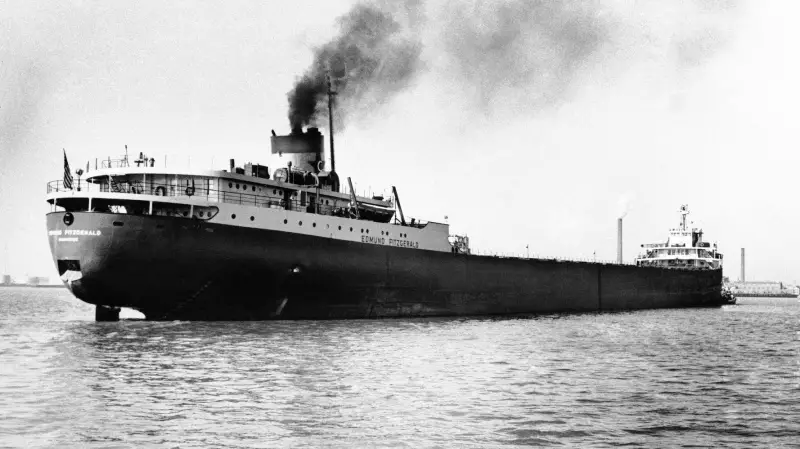
Five decades have passed since the freighter SS Edmund Fitzgerald vanished into the stormy depths of Lake Superior, but the haunting legacy of the Great Lakes' most famous shipwreck endures. The vessel sank on November 10, 1975, claiming the lives of all 29 crew members, and its exact fate remains an unsolved mystery.
The Fateful Day and the Race to Report
Harry Atkins, then a news reporter for the Associated Press in Detroit, was dispatched to Michigan's Upper Peninsula to cover the story. The Fitzgerald, a massive freighter, was transporting a load of iron ore from Superior, Wisconsin, to Zug Island in Detroit when it was overtaken by a terrifying early November storm.
Atkins, now 86 and living in Savannah, Georgia, recently recounted his experience to his former employer. He first learned something was wrong from an unusual source: a resident of Whitefish Bay whom Atkins described as an "old hermit." This man was listening to ship radio communications and alerted radio stations that the Fitzgerald was in distress.
The last message ever heard from the ship was sent to a nearby vessel, the Arthur Anderson. The Fitzgerald's captain reported, "We are holding our own." Atkins quickly filed a preliminary story and then drove overnight to Sault Ste. Marie, roughly 347 miles (559 kilometers) north of Detroit.
A View from the Sky Over Whitefish Bay
Upon arrival, Atkins needed to get to the scene. "I got the Yellow Pages," he said, "and started looking for an airplane." He found a retired Navy pilot with a small, high-wing aircraft to fly him and a photographer over the Canadian side of Lake Superior.
From the air, the scene was grimly telling. They saw two freighters, two Coast Guard boats, and another vessel all pointed toward a central spot "like the Chrysler star." Atkins knew the Fitzgerald must be below them. They spotted a lifeboat and a life vest in the churning water, but no sign of the 29 sailors. Their bodies were never recovered.
To this day, the wreckage of the Edmund Fitzgerald rests under 535 feet (165 meters) of water, approximately 17 miles (27 kilometers) from Whitefish Point, Michigan. The site is protected as a gravesite under Canadian law.
From Newsprint to a Folk Ballad Legacy
Once back on land, Atkins called his colleagues to relay his draft. The opening paragraph, or "lede," of his story read: "Rescuers searched Lake Superior’s chilly waters Tuesday for the 29-member crew of the sunken ore-carrier Edmund Fitzgerald but found only an oil slick, empty lifeboats and life jackets."
That news coverage, along with a subsequent article in Newsweek, caught the attention of Canadian folk singer Gordon Lightfoot. He was moved to write "The Wreck of the Edmund Fitzgerald," a haunting ballad released in August 1976. The song immortalized the disaster, transforming it from a tragic news item into a permanent part of North American culture.
"It's a haunting ballad," Atkins said, his voice thick with emotion. "I get choked up every time." While he heard the song over the years, he didn't fully grasp the infamy of the disaster until the 25th-anniversary coverage. The Edmund Fitzgerald was the last major shipwreck on the Great Lakes, as technology improvements in its wake helped prevent similar tragedies.
As family members and maritime enthusiasts gather to mark the 50th anniversary, the story continues to resonate, a somber reminder of the power of nature and the lives lost that November day.





